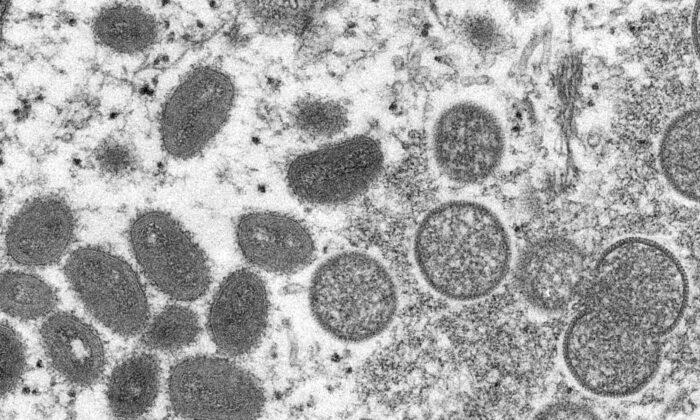New York City health officials have issued a warning about a “substantial” increase in monkeypox infections and urged vigilance as monthly cases have more than doubled compared to most of last year, with the advisory coming just weeks after authorities warned of a record jump in cases of a potentially deadly disease caused by rat urine.
The peak case count was 51 in January 2024, according to officials, which is several times higher than it was at roughly the same time last year. Officials said 94 percent of the 256 cases recorded between January and April were among men who had sex with other men. Most of the cases were mild, with 10 people hospitalized.
“This, along with the large outbreak of the more severe Clade I monkeypox virus (MPXV) in the Democratic Republic of the Congo, highlight the need for ongoing vigilance, especially approaching the summer when increased transmission may occur,” the health officials wrote in the advisory.
Clade I causes more severe illness and is more infectious, with the CDC stating that some outbreaks have killed up to 10 percent of people who get sick.
Both types of monkeypox virus can spread through direct contact with infected animals or contaminated materials and as a result of close contact (including intimate contact) with a person who has contracted the pathogen.
The New York City health officials warned that it’s possible that the more severe and more transmissible Clade I variant could be introduced to the United States by a traveler to the Democratic Republic of the Congo or other endemic countries.
Health officials recommend that anyone at risk of exposure should get vaccinated against monkeypox.
Human Leptospiroris Warning
New York City’s Department of Health and Mental Hygiene warned in the April advisory that the number of human leptospirosis cases continues to trend upward.Officials said 24 cases were reported in New York City in 2023, the highest number in a single year on record.
They said six cases have been reported so far in 2024, which is twice as high as the average annual number of cases between 2001 and 2020.
While human leptospirosis infections can be caused by contaminated soil and water during natural disasters such as floods and hurricanes, in New York City, they’re mostly caused by rat urine.
Leptospirosis is a zoonotic disease caused by several species of bacteria. In New York City, it’s mostly associated with the Norway rat.
“Infected animals excrete the bacteria in their urine, and bacteria can persist in warm, moist environments for weeks,” the advisory reads.
“Transmission occurs through direct contact with infectious urine or urine contaminated water, soil, or food, entering the body through open wounds or mucous membranes.”
In New York City, the average number of locally acquired cases of the disease was 15 per year during 2021–2023. That number was just three per year on average between 2001 and 2020.
While it’s unclear what is accounting for the rise in infections, the city’s health department suggested that excessive rain and unseasonably warm temperatures may have something to do with it.
The alarming advisory came exactly a year after New York City Mayor Eric Adams appointed Kathleen Corradi as the city’s first-ever citywide director of rodent mitigation, which his office dubbed the “rat czar.”“New York City has done a lot recently when it comes to fighting public enemy number one: rats,” Mr. Adams said in a statement on April 12, 2023. “But it was clear we needed someone solely focused on leading our rat reduction efforts across all five boroughs.”
The appointment of Ms. Corradi as “rat czar” came as Mr. Adams’s office announced a $3.5 million investment in an accelerated rat reduction plan.
While it’s unclear how many rats there are in New York City, research in mid-2023 from MMPC Pest Control suggests that the city’s rat population has grown to about 3 million.
Besides the legislation and the appointment of a rat czar to deal with the city’s rat population, there’s also an effort underway to sterilize the rodents to reduce their numbers.






